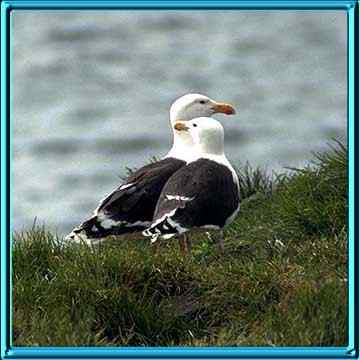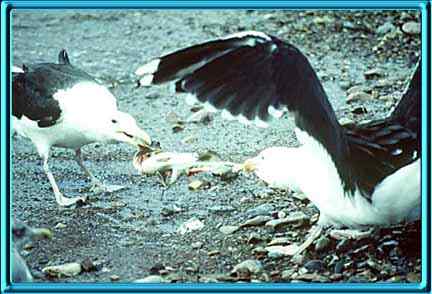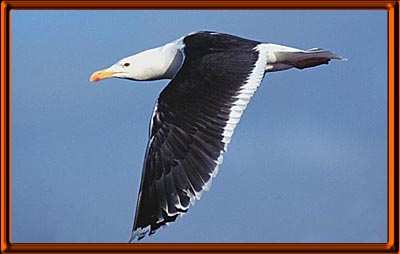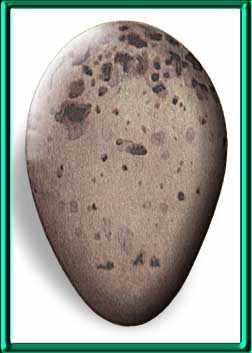
(Great Black Backed Gull)
This is the largest gull and is easy to distinguish with it's huge size, black back, powerful head and bill even in comparison to the Lesser Black Backed Gull. The Great Black Backs may be found well out to sea as well a along the coasts. They breed on remote headlands and islands in the north and west, where they are increasing, following near extinction from shooting at the turn of the century. Island populations have increased considerably since the 1930's, and these ferocious killers present a serious hazard to shearwaters and other birds (see picture below).
"You can't beat live food, and Shearwater chicks are great".
The plumage is snow white with a very dark grey (almost black) mantle. There are black wing tips with white "mirrors". The legs are pale flesh pink and the bill is yellow with a red spot on the lower mandible. Flat forehead and large bill give "mean" appearance
As with other gulls, great black blacks owe their increase in numbers to greater quantities of rubbish, fish offal, and sewage being available, allowing more birds to survive the winter. The flight of this bird is wonderfully graceful and powerful.
Biology:
Size: This chap weighs in at 29 inches long. Wingspan: 65 inches.
Habitat: Coasts and estuaries but is now becoming a frequent pest in towns and cities near the coast.
Nest: Rocky cliffs and small islands are the usual nesting sites, while the nest itself consists of an untidy mass of grass, seaweed, thrift and similar plants, together with sticks and other rubbish which may be at hand.
Eggs: There is only one clutch of eggs per year consisting of 2 or 3 dark olive or dark olive buff thinly blotched with brown. Lays May or June.
Food: Chiefly carrion and seabirds which it kills, and the eggs and young of any birds. It is a callous murderer, not even eating all it kills
Back to main gull page.
Back to main pest bird page


